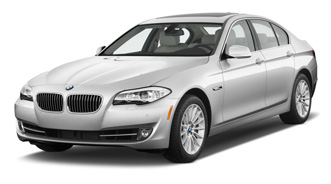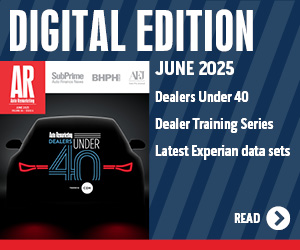Analysis: Luxury Lease Penetration Back at Pre-Recession Levels

In what should be good news for used-car managers looking for luxury models down the road, NADA Used Car Guide contends that lease penetration for high-end models is back to pre-recession levels.
Analysts indicated that the lease rate for luxury units hit 45 percent in 2011, and the rate stood at 44 percent through the first quarter of this year.
“Clearly improving economic conditions and strong used prices have made the future risk associated with end-of-term residuals more palatable for manufacturers,” NADA UCG declared.
“Historically, luxury manufacturers have been particularly reliant on leasing, in large part because it satisfies the driver’s preference for a shorter replacement cycle,” analysts continued.
In the three years leading up to 2009, analysts pointed out luxury brand lease penetration — or the share of new-vehicle leases as a percentage of total retail registrations — averaged 46 percent, per R.L. Polk data.
“This means that lease originations accounted for nearly half of all new-vehicle transactions for luxury brands over this period,” analysts explained. “The market turmoil of 2009 abruptly changed things, however, and the lease rate fell nine points from the previous three-year average to 39 percent.”
When looking across brands, NADA UCG determined that certain trends stand out, including the relative consistency in lease penetration for BMW, Lexus and Mercedes-Benz, as well as the decline in penetration for Audi.
The firm added the rise in leasing for Infiniti is also noticeable, as is the brand’s current luxury sector-topping rate of 60 percent.
“While leasing at reasonable levels can be profitable for manufacturers and provide dealers with much-needed used inventory, as we’ve seen in the past, an over-dependence on leasing can have a detrimental impact on used value retention — because prices become depressed when a glut of supply hits the market,” analysts acknowledged.
“At a market level, current penetration rates don’t cause much concern over future used price performance. But the distinct spikes at the brand level portend softer used prices when the models responsible for the increases hit the secondary market in large quantities three years down the road,” they went on to say.
Leases Coming on the Books
In another look at leasing levels, Experian Automotive discovered that the share commanded by leases among all new-vehicle finance originations in the first quarter remained relatively steady against prior-year comparisons, as its analysis found that the lease penetration rate again exceeded 24 percent.
More specifically, in the Q1 2012 State of the Automotive Finance Market report, Experian said that new lease share of new financing was at 24.44 percent.
Down slightly from a year ago, this compares to 25.20 percent in the first quarter of 2011. The leasing rate was at 24.05 percent in the first quarter of 2010.
Looking at overall financing numbers (including new and used), leasing commanded a 10.56-percent share, compared to 11.06 percent in the first quarter of 2011.
Breaking overall leasing numbers down further, 96.22 percent were new leases and 3.78 percent were used leases. Those numbers are fairly consistent with the year-ago period (96.51 percent for new; 3.49 percent for used).
Top Players in New-Vehicle Leasing
Moving along, Experian also looked at the biggest lease providers in the new-vehicle market. With regards to the strongest share of the new lease market, American Honda Finance topped the list (16.5 percent), followed by Toyota Financial Services and Ford Motor Credit, both of which were at 11.4 percent.
Nissan Infiniti Financial Services was next at 10.8 percent, according to Experian, followed by Ally (9.0 percent). Hyundai Capital America took a 7.5-percent share, while Volkswagen Credit came in at 7.3 percent.
Mercedes-Benz Financial pulled in a 6-percent share of the market, followed by BMW Bank of North America (5.6 percent) and Chase Auto Finance (3.0 percent), respectively.
Ranking these same lenders based on the percent of their new-vehicle financing that are leases, Mercedes-Benz Financial (76.21 percent) topped the list, with BMW Bank of North America (56.92 percent) in second, officials noted.
Hyundai Capital America was at 52.95 percent, followed by VW Credit at 52.41 percent. Nissan Infiniti Financial Services had 46.19-percent penetration, with American Honda Finance at 43.03 percent.
Next up, Toyota Financial Services (31.05 percent) and Ford Motor Credit (31.23 percent) were close in this measure, as well. Ally came in at 21.61 percent, and Chase Auto Finance was at 11.54 percent.
Where Lease Penetration is Heading
With nearly half of 2012 gone, J.D. Power and Associates senior director Thomas King believes the leasing levels franchised dealers witnessed through the first six months of the year should continue as the rest of the year rolls along.
King told Auto Remarketing recently that he expects lease penetration for the balance of 2012 to be similar to year-to-date levels — holding at 20 percent to 21 percent.
“Although we do anticipate greater volatility on a monthly basis,” King cautioned, adding the factors that could sway the net impact leasing penetration.
Those factors included:
—Continuation of depressed lease-return volumes due to the decline in leasing in 2008 and 2009.
—Continuation of elevated 72-month (and longer) loan penetration, which provides consumers with reduced monthly payments and an alternative to leasing.
—Continued recovery of the subprime market, which is contributing to overall industry growth but has a limited impact on leasing (lower credit buyers have a low propensity to lease).
—Luxury vehicle sales recovering from a slow start to the year as luxury buyers have a high propensity to lease.
—New product activity as OEMs are planning multiple new and redesigned products, typically using incentive tactics biased to lease customers rather than cash/finance buyers.
King also explained any leasing trends that might unfold based on which vehicle segment and brand.
“In all segments, we expect to see volatility as manufacturers sell down old models prior to the launch of new/redesigned models,” he stated. “During sell down, manufacturers tend to use elevated cash and finance incentives, while new-model incentives are typically biased towards leasing in order to take advantage of strong residuals on the new-model-year/redesigned products.
“Lease penetration will likely peak at the end of the year as luxury brands launch their traditional year-end sales initiatives,” King concluded.


